What’s Trending on Google: A Guide to Google Trends

In this article, we’ll show you the most effective way to use Google Trends as well as some cool tricks to get the most out of it.
Google trends is one of the most useful tools to get insight into what people are searching the internet for at any given time.
Google trends will show you how popular certain search terms, and how their popularity varies over time. You can see if interest in a term is rising or decreasing. You can also use it for several SEO purposes like keyword research or comparing how well your own site or business is doing against your competitors.
In this article, we’ll show you the most effective way to use Google Trends as well as some cool tricks to get the most out of it.
How Google Trends Works
This is the most important thing you can possibly take away from this article. Google Trends will not show you the search volume for keywords. This is a frequent amateur mistake.
Instead, it shows you relative popularity of a search query. Relative to what? Relative to all possible queries, on a scale of 0 to 100. Let’s look at an example.
If you type “Christmas shopping” into Google Trends, you’ll see its relative popularity over time compared to all other Google search terms.
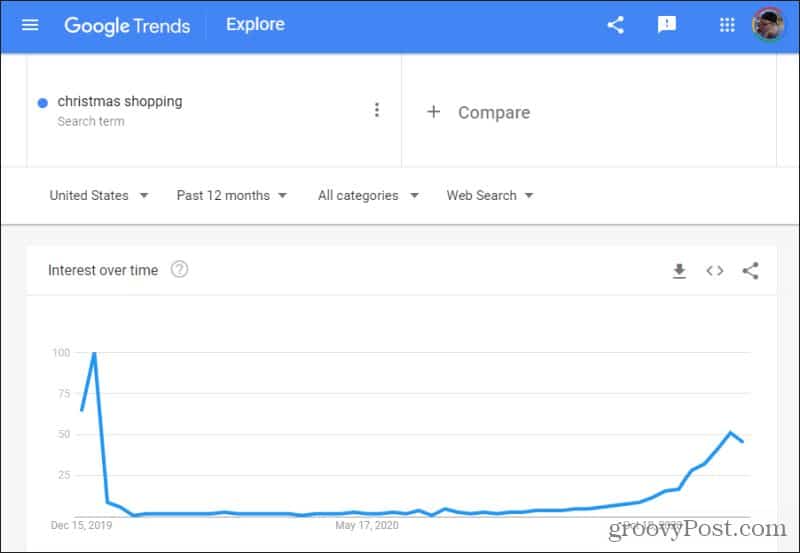

As you can see, the range on the left axis goes from 0 to 100 to represent the overall popularity of the query across the entire web. The popularity of this search term peaks at nearly 100% leading up to Christmas and flattens the rest of the year.
This is why Google Trends is so effective at showing seasonal trends for topics. You can also narrow this down to categories of Google queries rather than all of them. Just select All categories and choose from a subset of Google queries.
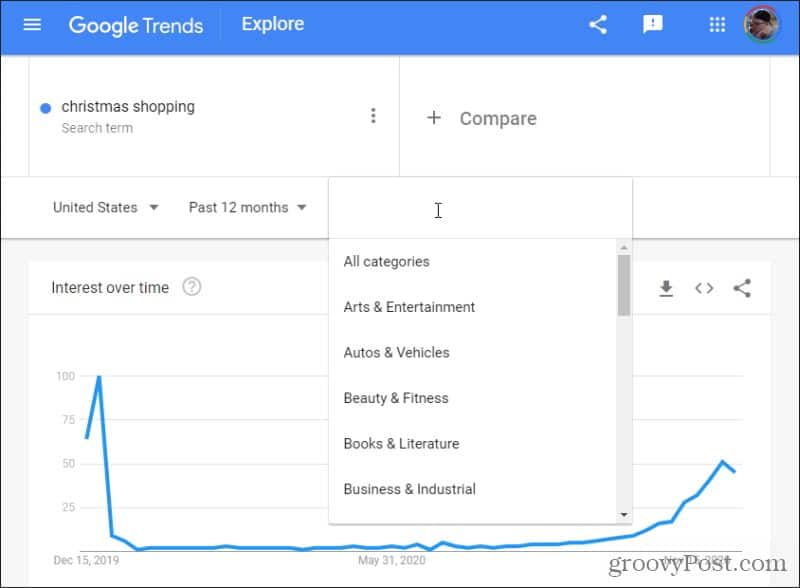

You can also modify the view by geographic region, time period, or whether the queries were made on Image Search, News Search, Google Shopping, or YouTube Search.
Discover Niches Using Google Trends
The key to identifying very new trends that few other sites or businesses have capitalized on yet is by finding queries with a very sharp spike of recent traffic.
This could be anything, including new slang words, news topics, or new products. For example, consider Twitter rolling out the “Twitter Fleets” feature on November 17th to select Twitter accounts. If you check Google Trends for this term, you’ll see how dramatically searches for it spiked starting in October 2020 when people started hearing about it.
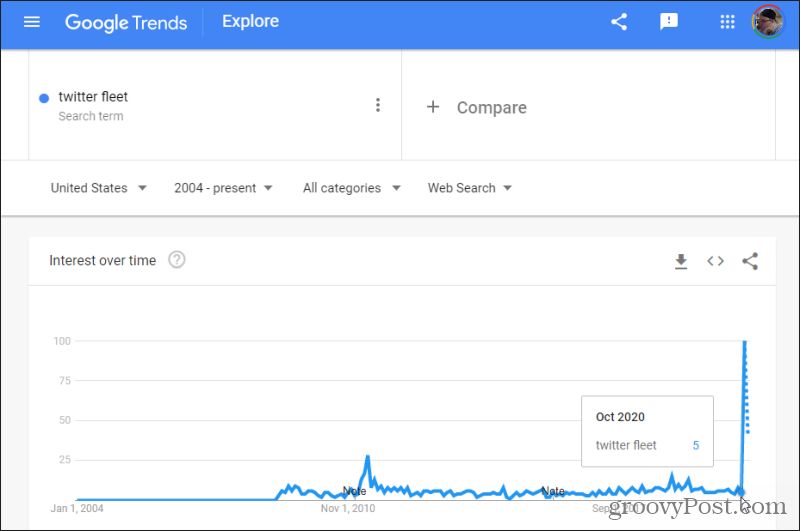

If you can identify any new trends like this that recently skyrocketed in query volume, you could potentially jump on that with your website or your business before anyone else does.
Just be careful not to jump too fast. There are a lot of search queries that are short-lived, like news topics. Interest disappears as quickly as it arrives. So give it some time and keep checking Google Trends to see if the query maintains a strong volume after the initial spike.
Using Google Trends for Keyword Research
Whether you’re writing an article online or looking for a good keyword to use on a page where you’re trying to sell a product, finding the right words to mention is important. However, it’s difficult to identify exactly what people are searching for related to your product.
As an example, let’s say you sell winter scarves. If you want to know what people type into Google the most related to winter scarves, search Google Trends for “winter scarves”.


This trend graph shows the kind of seasonal pattern we discussed above, where most searches for “winter scarves” take place during…winter. This is obvious. But if you want to see the top related searches to this, just scroll down the page to the Related topics and Relates queries sections.
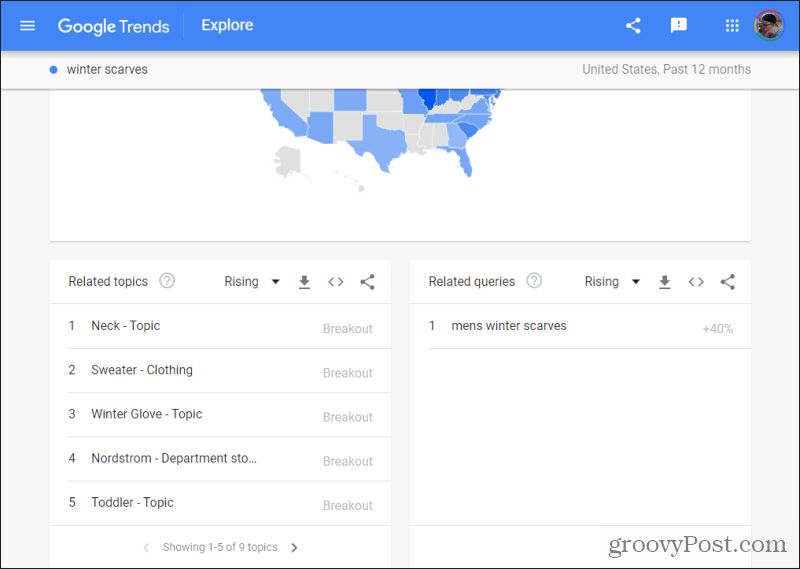

Related topics show areas that might provide you with some other general topics you could cover related to scarves. Relates queries show things people are searching for directly related to the search term you’ve used. In this case, most people are looking for “mens winter scarves”.
Comparing Topic Popularity
Another interesting use for Google Trends is gauging public sentiment on certain topics. For example, if you’re interested in how many people are interested in the hobby of “hiking” versus “skiing”, you can compare these terms in Google Trends.
Type “hiking” in the Add a search term field, and type “skiing” in the Compare field. If you press tab, you’ll see another Add comparison field to compare additional search terms.
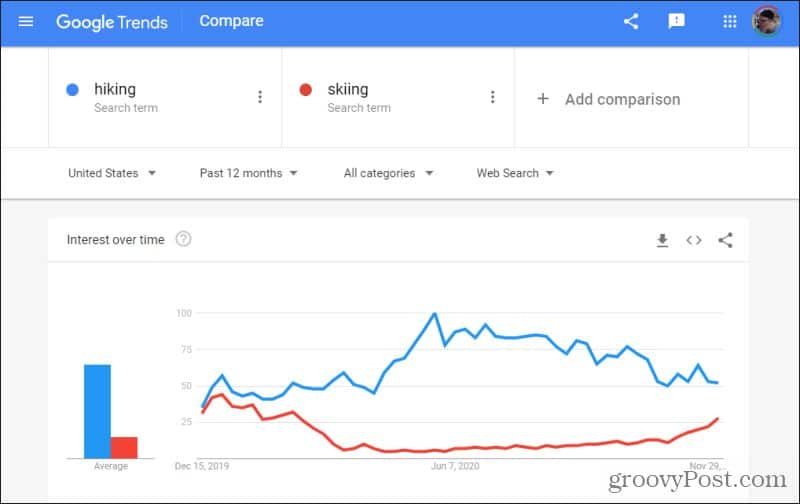

You can see that far more people are searching for hiking online than skiing. The only time the two terms are almost equal in popularity is during December.
These sorts of comparisons can help you see how the majority of people feel about certain topics, political opinions, which products are more popular, and much more.
Other Useful Google Trend Analytics
What’s also useful about the results in Google Trends is that it’s organized in a granular way. For example, if you want, you can see results by a subregion.
To do this, just scroll down to the Compare breakdown by subregion section. Select the area of the country you want to focus on.
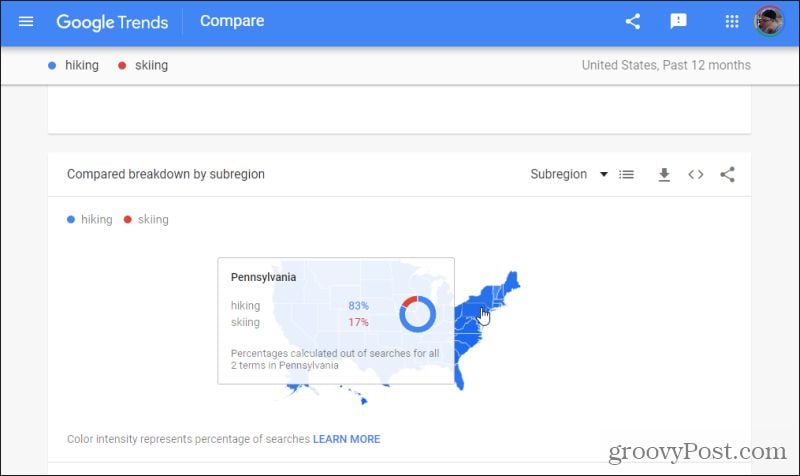

When you do, you’ll see the original charts change to show only the search trends for the region you’ve selected.
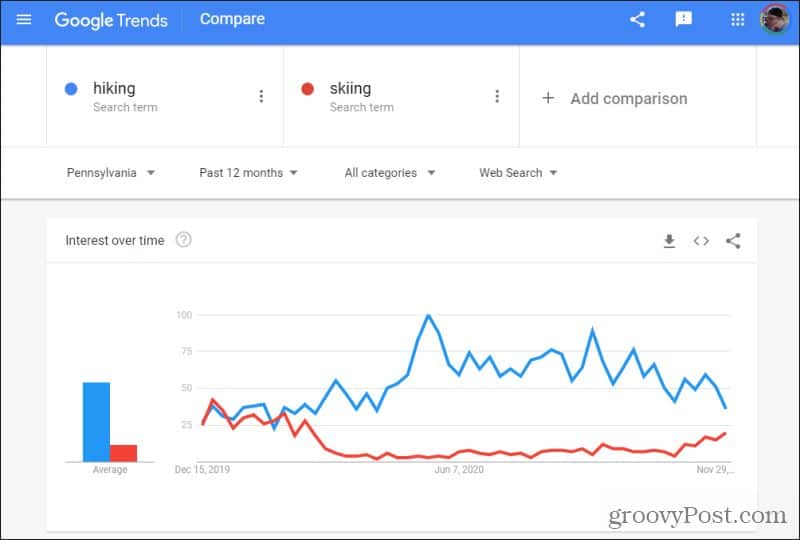

Now if you scroll down again you’ll see a section called Compared breakdown by metro. You can actually zoom in further to see search trends right down into your own community. If there’s enough data for your specific city (population is large enough), you can even focus that far.
This kind of data is invaluable for local businesses. It tells you what your own neighbors are interested in, and can help you create more targeted online advertising to attract web visitors from your own region.
Using Google Trends
As you can see there’s a lot more to Google Trends than just doing a simple keyword search. You can dig further into the data and learn about topical trends around the world, by region, by timeframe, and by season.
So give it a try and see if it doesn’t give you more insight into user interests on the internet than you ever thought possible.




